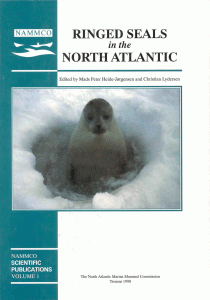Volume 1: Ringed Seals
RINGED SEALS IN THE NORTH ATLANTIC
The ringed seal, or “natsiq”, has always been of profound importance to the Inuit of the circumpolar north. Ringed seals can be hunted year-round, and can provide most of the necessities of a nomadic people’s life, including food, fuel for the production of heat and light, and skins for the fabrication of clothing, shelter and hunting tools. In the 20th century, the Inuit of Greenland and Canada were integrated into the international economy through their export of sealskins to other countries. In recent decades, however, this trade has been drastically reduced, with dire consequences for the economies of Inuit communities.
Ringed Seals in the North Atlantic presents an overview of the most current scientific knowledge about the ringed seal. The volume begins with a broad assessment of the distribution, abundance and biology of the species, followed by regional overviews of ringed seal populations. The relationship between northern peoples and the ringed seal is elaborated through regional descriptions of catch history and exploitation. Other papers describe our present knowledge of aspects of ringed seal biology, including reproduction, movements, diet and the accumulation of contaminants.
This volume is edited by Dr Mads Peter Heide-Jørgensen, senior scientist with the Greenland Institute of Natural Resources and current Chairman of the NAMMCO Scientific Commitee, and Dr Christian Lydersen, research scientist with the Norwegian Polar Institute. The Scientific Committee’s assessment of ringed seals conducted through a special Working Group in 1996, which included scientific experts from all NAMMCO member countries (Faroe Islands, Greenland, Iceland and Norway). The Working Group also benefited greatly from the contributions of scientists from Canada and the Russian Federation, whose work is contained in this volume.



